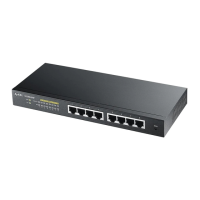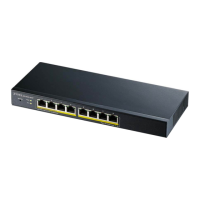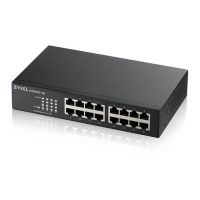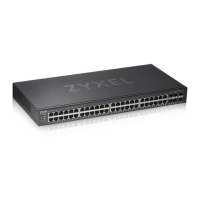Chapter 34 Access Control
GS1350 Series User’s Guide
268
CHAPTER 34
Access Control
34.1 Access Control Overview
This chapter describes how to control access to the Switch.
A console port and FTP are allowed one session each, Telnet and SSH share nine sessions, up to five Web
sessions (five different user names and passwords) and/or limitless SNMP access control sessions are
allowed.
A console port access control session and Telnet access control session cannot coexist when multi-login
is disabled. See the CLI Reference Guide for more information on disabling multi-login.
34.1.1 What You Can Do
• Use the Access Control screen (Section 34.2 on page 268) to display the main screen.
• Use the SNMP screen (Section 34.3 on page 269) to configure your SNMP settings.
• Use the Trap Group screen (Section 34.3.1 on page 270) to specify the types of SNMP traps that should
be sent to each SNMP manager.
• Use the User Information screen (Section 34.3.3 on page 272) to create SNMP users for authentication
with managers using SNMP v3 and associate them to SNMP groups.
• Use the Logins screens (Section 34.4 on page 274) to assign which users can access the Switch via
Web Configurator at any one time.
• Use the Service Access Control screen (Section 34.5 on page 276) to decide what services you may
use to access the Switch.
• Use the Remote Management screen (Section 34.6 on page 277) to specify a group of one or more
“trusted computers” from which an administrator may use a service to manage the Switch.
34.2 Access Control Main Settings
Use this screen to display the main screen.
Click Management > Access Control in the navigation panel to display the main screen as shown.
Table 130 Access Control Overview
Console Port SSH Telnet FTP Web SNMP
One session Share up to 9 sessions One session Up to 5 accounts No limit

